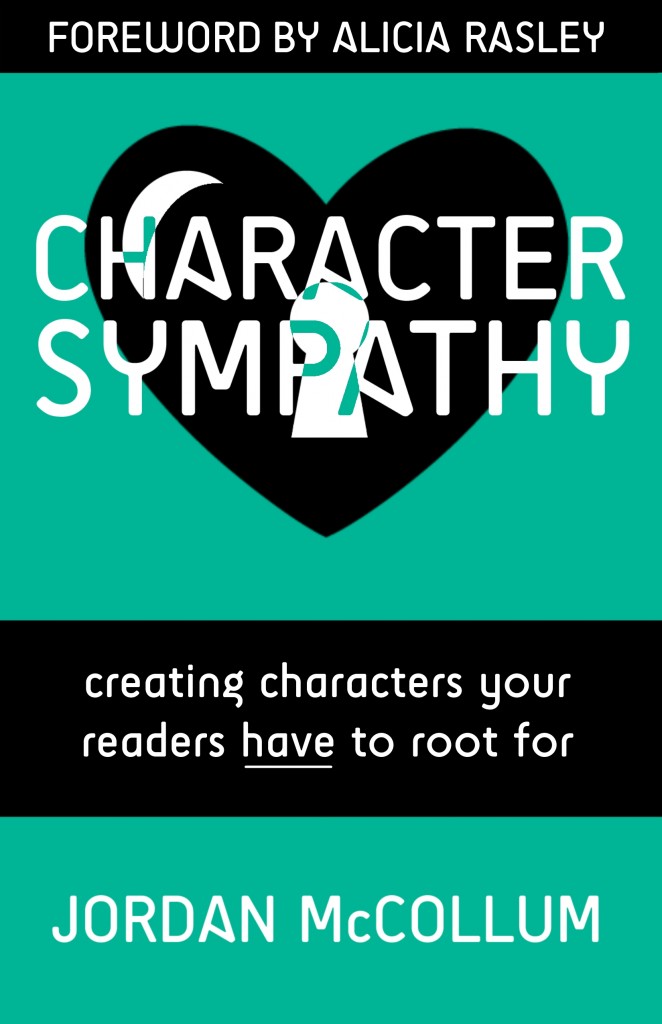Pride and Prejudice is a literary classic. But can you find the principles of character sympathy in a two-hundred-year-old novel? You can find the full text of Pride and Prejudice online with Project Gutenberg.
 A true Regency novel (the formal Regency period only lasted nine years until the Prince Regent ascended to the throne), Pride and Prejudice focuses heavily upon society and the social interactions of a wide circle of people. It’s written in omniscient POV, enabling the narrator to convey more information about all of the characters than any one of them would be privy to in the course of a story. Of course, with such a broad focus, it takes a while to really establish Elizabeth Bennet as the main protagonist of the story.
A true Regency novel (the formal Regency period only lasted nine years until the Prince Regent ascended to the throne), Pride and Prejudice focuses heavily upon society and the social interactions of a wide circle of people. It’s written in omniscient POV, enabling the narrator to convey more information about all of the characters than any one of them would be privy to in the course of a story. Of course, with such a broad focus, it takes a while to really establish Elizabeth Bennet as the main protagonist of the story.
She’s introduced in the first chapter, which focuses on her parents discussing the arrival of Mr. Bingley, a “single man in possession of a good fortune” (who “must be in want of a wife”). Elizabeth’s father pretends he won’t go to meet their new neighbor, not even to improve the marriage prospects of his five daughters, and will send his wife to meet him instead. He says he’ll write a letter to go with her:
“I will send a few lines by you to assure him of my hearty consent to his marrying which ever he chuses of the girls; though I must throw in a good word for my little Lizzy.”
“I desire you will do no such thing. Lizzy is not a bit better than the others; and I am sure she is not half so handsome as Jane, nor half so good humoured as Lydia. But you are always giving her the preference.”
“They have none of them much to recommend them,” replied he; “they are all silly and ignorant like other girls; but Lizzy has something more of quickness than her sisters.”
Elizabeth is off-stage in the first chapter and only has three lines of dialogue in the second chapter, so our first real encounter with her character for a while is through her parents discussing her. In this direct characterization, we’re told she isn’t as pretty or as good humored as her sisters, but her father favors her because of her “quickness.” This wit, which we do get to see throughout the book, is probably her chief strength.
Elizabeth’s first real scene comes in chapter. Mr. Bingley has brought his friend, Mr. Darcy, to his estate and to a ball. At first, Darcy makes quite a stir (being rich, noble and handsome), but when the crowd sees how conceited he is, the tide of their favor turns against him. Especially Mrs. Bennet, after Mr. Bingley invited Mr. Darcy to dance with Elizabeth. Darcy “looked for a moment at Elizabeth, till catching her eye, he withdrew his own and coldly said, ‘She is tolerable; but not handsome enough to tempt me; and I am in no humour at present to give consequence to young ladies who are slighted by other men.'” And he knows she can hear him.
She won’t allow herself to be crushed by the judgment of a man nobody likes anyway, of course. But this embarrassment at being slighted is the beginning of her struggles. More subtly, her struggles are woven throughout as we also get to see others’ harsh judgments of her and her family. This use of dramatic irony can be an advantage of omniscient POV.
Throughout the next few chapters, we see two defining features of Elizabeth: her wit and her prejudice. She’s quick to judge not only Darcy by Mr. Bingley and his sisters quite harshly. (While she’s off-scene, it does seem that this judgment, at least of the women, is justified). The prejudice sets up her character weakness (but that’s a post for another time!).
 In my model of character sympathy, to generate full reader identification, a character needs to have struggles, strengths and sacrifice. Elizabeth shows this last characteristic when her older sister takes ill while going for a short visit to the Bingleys and must stay there to convalesce. When word reaches them the next day, Elizabeth is concerned enough for her sister to walk the three miles to the Bingleys’ and stay there to care for her. The walk, she insists, is nothing, but the exertion puts her into a bit of disarray, especially to be seen by society people (who are already pretty conceited about how much better they are than all these country folk). But her sister’s welfare is more important to Elizabeth than anyone’s opinion.
In my model of character sympathy, to generate full reader identification, a character needs to have struggles, strengths and sacrifice. Elizabeth shows this last characteristic when her older sister takes ill while going for a short visit to the Bingleys and must stay there to convalesce. When word reaches them the next day, Elizabeth is concerned enough for her sister to walk the three miles to the Bingleys’ and stay there to care for her. The walk, she insists, is nothing, but the exertion puts her into a bit of disarray, especially to be seen by society people (who are already pretty conceited about how much better they are than all these country folk). But her sister’s welfare is more important to Elizabeth than anyone’s opinion.
Although we typically focus on establishing character sympathy at the beginning of a novel, these forces of character sympathy continue throughout Pride and Prejudice. Elizabeth juggles her often-inappropriate mother and her own tendencies to let her wit run wild, and is embarrassed by Mr. Darcy even more, until she ultimately must sacrifice her own pride and admit her prejudice—and that she was wrong in her judgment.
What do you think? What else makes Elizabeth Bennet a sympathetic heroine?
Photo credits: University of Texas, Lily Monster via Flickr & CC
 I began researching character sympathy years ago when I struggled with it myself. A shocking number of writers and resources suggested “fixes” and sources of character sympathy that are little more than gimmicks. The effective advice I found was piecemeal at best: a chapter here, a section of a book there, an Internet article. There was NO comprehensive resource on the why and especially the how of creating character sympathy.
I began researching character sympathy years ago when I struggled with it myself. A shocking number of writers and resources suggested “fixes” and sources of character sympathy that are little more than gimmicks. The effective advice I found was piecemeal at best: a chapter here, a section of a book there, an Internet article. There was NO comprehensive resource on the why and especially the how of creating character sympathy. Finally, I have a guest post at Janice Hardy’s Fiction University about
Finally, I have a guest post at Janice Hardy’s Fiction University about 

 Also in the Writing Craft Series
Also in the Writing Craft Series Several types of humor work particularly well with this, including wit and sarcasm, especially used in a self-deprecating way. Being able to poke fun at herself makes a character more endearing. Making fun of another character in a mean-spirited way, bullying, and cruelty, however, are very likely to backfire on the character-sympathy level.
Several types of humor work particularly well with this, including wit and sarcasm, especially used in a self-deprecating way. Being able to poke fun at herself makes a character more endearing. Making fun of another character in a mean-spirited way, bullying, and cruelty, however, are very likely to backfire on the character-sympathy level.

